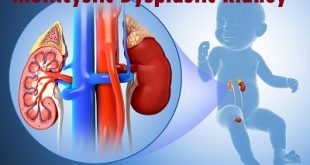Definition
Meniere’s disease (also called idiopathic endolymphatic hydrops) is one of the most common causes of dizziness originating in the inner ear. In most cases, only one ear (unilateral) is involved, but both ears (bilateral) may be affected. Ménière’s disease typically affects people between the ages of 40- and 60-years-old and can impact anyone. Occasional symptoms include vertigo (attacks of a spinning sensation), hearing loss, tinnitus (a roaring, buzzing, or ringing sound in the ear), and a sensation of fullness in the affected ear. These episodes typically last from 20 minutes up to eight to 12 hours.
Hearing loss is often intermittent, occurring mainly at the time of the attacks of vertigo. Loud sounds may seem distorted and cause discomfort. Usually, the hearing loss involves mainly the lower frequencies, but over time this often affects higher tones as well. While hearing loss initially fluctuates, it often becomes more permanent as the disease progresses.
Meniere’s disease pathophysiology
Although the etiology of Meniere’s disease is not well understood, it appears to be the result of the abnormal volume or composition of fluid in the inner ear. The inner ear consists of a system of connected tubes and cavities called a labyrinth. The outer ear consists of bone and is known as the bony labyrinth. A membranous labyrinth, made up of a soft structure of the membrane, is located inside the bony labyrinth and is similar in shape.
Anatomy of Inner Ear
The membranous labyrinth contains a fluid; hairlike sensors that line the membranous labyrinth respond to the movement of the fluid. This fluid needs to retain a certain volume, pressure, and chemical composition in order for all of the sensors in the inner ear to function properly. The following factors may change the properties of the inner-ear fluid and cause or trigger Meniere’s disease.
- Improper fluid drainage due to blockage or anatomical abnormality
- Abnormal immune response
- Allergies
- Viral infection
- Genetic predisposition
- Head trauma
- Migraines
No single cause has yet been identified for Meniere’s disease; it may be caused by a combination of factors.
Types of Meniere’s disease
Meniere’s Disease can be classified in three ways. In the management of Meniere’s disease, the following three primary sub-classifications of Meniere’s disease, to describe the specific signs and symptoms, as noted below.
Classic Meniere’s disease is an inner ear disorder characterized by episodic vertigo attacks (often with nausea and vomiting), sensorineural hearing loss, tinnitus, and pressure or fullness in the involved ear (usually unilateral). Initially, the hearing loss typically involves the low frequencies and the hearing loss fluctuates, generally becoming worse with each attack. Over time, the hearing loss progresses to involve the higher frequencies and the degree of hearing loss can progress to severe-to-profound. It is estimated that 80 percent of all Meniere’s disease patients are unilaterally involved.
In Vestibular Meniere’s disease, vertigo attacks are identical to classic Meniere’s disease (above). However, in Vestibular Meniere’s disease, hearing remains normal, and other aural symptoms (tinnitus, fullness) are absent.
Bilateral Meniere’s disease is characterized by bilateral fluctuating hearing loss and recurrent episodes of vertigo. One ear may initially present and later enter a quiescent period. Years later, a disease in the opposite ear may develop. Approximately 50% of patients destined to develop bilateral Meniere’s disease do so within 2 years, and 75% do so within 5 years. If patients with bilateral Meniere’s disease experienced symptomatic improvement with oral steroids, a diagnosis of autoimmune inner ear disease is made.
Meniere’s disease risk factors
Excess fluid in the inner ear: The inner ear is a group of connected passages and cavities called a labyrinth. The outside of the inner ear is made of bone (bony labyrinth). Inside is a soft structure of membrane (membranous labyrinth). Normally, there is a presence of fluid in the membrane system of the inner ear. This fluid plays a very important role in maintaining the balance of an individual. When there is a defect in the membranes of the inner ear like swelling, scarring, infection, injury, etc. the fluid bursts out of the membrane entering other areas and causing damage, which affects the sense of balance
Autoimmune: There is some evidence that the body’s own immune mechanism may be responsible for the disorder.
Viral Infection: There is a possibility that a virus could be responsible for the disorder.
Allergies: Any kind of allergy to substances like dust, pollen, or food products like wheat, nuts, dairy products, seafood may trigger inner ear symptoms of dizziness, ringing, hearing loss, etc. and aggravate Meniere’s disease.
Heredity: Meniere’s disease could be a result of genetic variation and it could run in families.
Migraine: There is an increased prevalence of migraine in patients with Meniere’s disease. About one-third of patients with Meniere’s also experience migraines.
Dietary: There is some evidence that shows excess salt intake can exacerbate the condition.
Other: Some other probable causes are stress, smoking, and alcohol.
Causes of Meniere’s disease
The exact cause of Ménière’s disease isn’t clear, although it’s thought to be caused by a problem with the pressure in the inner ear.
The inner ear is made up of:
- The cochlea – A coiled, spiral tube that contains two fluid-filled chambers and is responsible for hearing
- The vestibular apparatus – A complex set of tubes that help to control balance
The fluid inside the inner ear is called endolymph.
If the pressure of the endolymph fluid changes – for example, because there is too much fluid – it can result in symptoms such as vertigo and tinnitus.
It’s thought that this pressure change is responsible for Ménière’s disease, although it hasn’t been proven.
Symptoms
Signs and symptoms of Meniere’s disease include:
Recurring episodes of vertigo: You have a spinning sensation that starts and stops spontaneously. Episodes of vertigo occur without warning and usually last 20 minutes to several hours, but not more than 24 hours. Severe vertigo can cause nausea.
Hearing loss: Hearing loss in Meniere’s disease may come and go, particularly early on. Eventually, most people have some permanent hearing loss.
Ringing in the ear (tinnitus): Tinnitus is the perception of a ringing, buzzing, roaring, whistling or hissing sound in your ear.
Feeling of fullness in the ear: People with Meniere’s disease often feel pressure in an affected ear (aural fullness).
After an episode, signs, and symptoms improve and might disappear entirely for a while. Over time, the frequency of episodes may lessen.
Symptoms of Meniere’s disease
Meniere’s disease complications
- The most disruptive feature of Ménière’s disease is the sudden onset of vertigo attacks.
- The individual may have to lie down and miss out on social, leisure, work, or family activities.
- Vehicle licensing authorities in many countries state that people with a diagnosis of Ménière’s disease must not drive.
- These authorities will not permit the individual to drive until they receive a doctor’s confirmation that their symptoms are under control.
Diagnosis and test
A diagnosis of Meniere’s disease includes vertigo, hearing loss, tinnitus, and a feeling of pressure. Many of the symptoms of Meniere’s disease can also be caused by other conditions, so the diagnosis of the condition often involves first ruling out other medical possibilities.
There is no specific test for Meniere’s disease, but doctors use a range of tests in combination to help diagnose the disorder. These include:
Hearing tests – To test if hearing loss is specific to your inner ear. cator of Meniere’s.
Electronystagmography (ENG) – Measures involuntary eye movement while your balance is put under stress.
Magnetic resonance imaging (MRI) – Can be used to rule out disorders of the central nervous system that may be confused with Meniere’s disease, such as acoustic neuroma, Arnold-Chiari malformation and multiple sclerosis (MS).
Treatment and medications
Ménière’s disease does not have a cure yet, but your doctor might recommend some of the treatments below to help you cope with the condition.
Medications- The most disabling symptom of an attack of Ménière’s disease is dizziness. Prescription drugs such as meclizine, diazepam, glycopyrrolate, and lorazepam can help relieve dizziness and shorten the attack.
Salt restriction and diuretics- Limiting dietary salt and taking diuretics (water pills) help some people control dizziness by reducing the amount of fluid the body retains, which may help lower fluid volume and pressure in the inner ear.
Other dietary and behavioral changes- Some people claim that caffeine, chocolate, and alcohol make their symptoms worse and either avoid or limit them in their diet. Not smoking also may help lessen the symptoms.
Cognitive therapy- Cognitive therapy is a type of talk therapy that helps people focus on how they interpret and react to life experiences. Some people find that cognitive therapy helps them cope better with the unexpected nature of attacks and reduces their anxiety about future attacks.
Injections- Injecting the antibiotic gentamicin into the middle ear helps control vertigo but significantly raises the risk of hearing loss because gentamicin can damage the microscopic hair cells in the inner ear that help us hear. Some doctors inject a corticosteroid instead, which often helps reduce dizziness and has no risk of hearing loss.
Pressure pulse treatment- The U.S. Food and Drug Administration (FDA) recently approved a device for Ménière’s disease that fits into the outer ear and delivers intermittent air pressure pulses to the middle ear. The air pressure pulses appear to act on endolymph fluid to prevent dizziness.
Alternative medicine- Although scientists have studied the use of some alternative medical therapies in Ménière’s disease treatment, there is still no evidence to show the effectiveness of such therapies as acupuncture or acupressure, tai chi, or herbal supplements such as ginkgo Biloba, niacin, or ginger root. Be sure to tell your doctor if you are using alternative therapies since they sometimes can impact the effectiveness or safety of conventional medicines.
Surgery- Surgery may be recommended when all other treatments have failed to relieve dizziness. Some surgical procedures are performed on the endolymphatic sac to decompress it. Another possible surgery is to cut the vestibular nerve, although this occurs less frequently.
Surgical procedures
Endolymphatic Sac Procedure
The endolymphatic sac plays a significant role in controlling fluid levels in the inner ear. The surgical procedure may effectively lessen vertigo by reducing the fluid collected within the inner ear. The procedure, endolymphatic sac decompression consists of removing a small fragment of bone from the endolymphatic sac. Sometimes, a tube is placed in the inner ear to drain excess fluid, to help relieve the pressure from the ear canals.
Vestibular Nerve Section
This procedure involves cutting the vestibular nerve in the inner ear, which is responsible for maintaining balance. This medical procedure relieves issues associated with vertigo spells while attempting to preserve hearing ability in the affected ear. The procedure requires administering general anesthesia and an overnight hospitalization of the patient. The theory behind the surgery is to convert an unstable labyrinth into a stable non-functional labyrinth.
Labyrinthectomy
This procedure best suits the patients who have severe hearing loss. The surgeon removes a section from the affected inner ear that governs balance and hearing ability.
Prevention of Meniere’s disease
There are no current guidelines to prevent Meniere disease. However, to help reduce your risk, avoid:
- High-salt diets
- Excess alcohol
- Stress
- Smoking
- Avoid medications that can be toxic to the ear
 Diseases Treatments Dictionary This is complete solution to read all diseases treatments Which covers Prevention, Causes, Symptoms, Medical Terms, Drugs, Prescription, Natural Remedies with cures and Treatments. Most of the common diseases were listed in names, split with categories.
Diseases Treatments Dictionary This is complete solution to read all diseases treatments Which covers Prevention, Causes, Symptoms, Medical Terms, Drugs, Prescription, Natural Remedies with cures and Treatments. Most of the common diseases were listed in names, split with categories.







